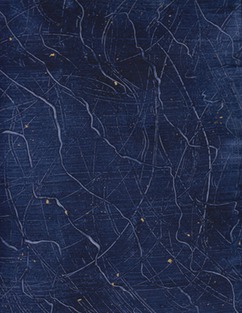I never really imagined that I would have to decorate my own endpapers. I mean, there are lots of artists out there making squadillions of patterns, and you are bound to find what you want if you look. Aren’t you?
Wrong, Goldilocks. Guess what, folks retire. Yup. Without even letting you know. No warning, just up and finish. And sometimes, no matter how beautiful the papers for sale are, they are not quite what you want. So that is how I came to make my own pastepaper for the endpapers of “Storming Shakespeare”.
I had taken a course on pastepaper about 3 years ago with Martha Cole but hadn't actually made anything since. Like many things it went on the back burner.

Pastepapers have been made for centuries, and very simply put, a thin layer of paste + colour is applied to a sheet of paper and various tools are used to make patterns in the paste mixture. The tools can be anything at all. I made a fine-toothed comb from a piece of a plastic ice cream tub, and also used a narrow strip of card.
With words from King Lear echoing in my ears ("the to-and-fro conflicting wind and rain") I made sweeping marks with the comb and used the strip of card to draw the diagonal wiggly marks (lightning), then scattered some real gold flakes and dust into the paste mixture while it was still wet.
Of course, this being for an edtion, I tried to make each sheet similar to the others, using a measured amount of the paste+colour mixture for each, but as I'm not a robot, each sheet is slightly different from its pals. And the evidence of the human touch, I think, is the beauty of a handmade object.